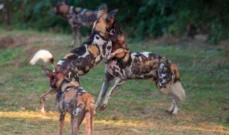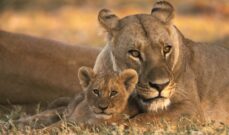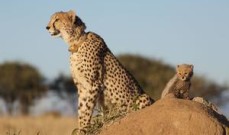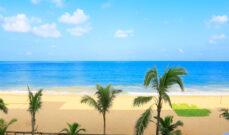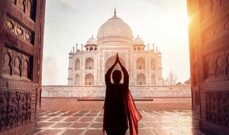Plan Your Safari
Planning a safari holiday and making all the required arrangements is not something simply to be done overnight.
To make it easier for you, we have given below the most useful information that is important to know before your plan your Safari.
Simply contact us to help you in the Safari Planning of your dream Safari Holiday!
What Is A Safari?
- The word safari derives from the Swahili word for ‘journey, and for most of us, it’s the dream journey of a lifetime. It is nature in its rawest and most beautiful form with every day bringing in a new revelation. You will feel a unique closeness with nature and time takes on a new meaning as you learn to sit quietly listening to the sounds of Africa. The balance of nature will no longer be empty words; you will see it daily in the drama of animals fighting for survival and co-existence.
What Will I See On A Safari in Africa?
- Your safari will be carefully planned to include a wide variety of sights and activities. Think of beautiful sunrise by the beach, colourful sunset on the plains and mountains; or a star-filled sky like you have never seen before.
- You will not only visit Africa’s most beautiful game reserves, see hundreds of rare birds and mammals from your chauffeured safari vehicle, but also the many different tribal people, and the exotic physical features from mountains to broad savannah, forests to rivers and deserts.
How Close Can I Get to the Animals on An African Safari?
- Your game drives will be in protected game areas, and there is no fear as long as you are in your vehicle. You can get quite close, especially when lions are busy feeding on prey or at rest. Monkeys and baboons may study you closely as you study them.
- But natural behaviour will only continue if you give the animals some space and peace. If you go too close or talk loudly, the animals may just leave. Most animals will be more interesting if allowed the space to continue their natural behaviour; stalking, mating, and playing with the young.
- Your driver will know the best viewing distance. Please don’t encourage him to “stalk” or otherwise interfere with hunting or other activities crucial to the animal’s survival.
What are the Accommodation Options on an African Safari Holiday?
- Accommodation on a Safari in Africa is of the highest standard with friendly service and excellent cuisine, and diversity that stretches the imagination!
- We have chosen the properties for our safaris with great care. Some of the terms used for accommodation can be a bit confusing and here we try to explain the difference between them:
- SAFARI LODGES:
- These vary in size and style. From small intimate bush homes to mid-sized properties. Small by normal hotel standards (50-150 beds), with facilities found in good quality establishments such as lounge, bar, dining room, small shop and in most cases, a swimming pool. All rooms have en suite bathroom facilities.
- TENTED LODGES & TENTED CAMPS :
- The main areas are similar to lodges but with tented room accommodation, which is erected on wooden or concrete bases.
- The ‘tented rooms’ are spacious, fully furnished tents with en-suite bathroom facilities. Often there is a small verandah providing the perfect place to enjoy the view.
- Tented lodges and camps offer the same feel as a safari lodge with the difference being that guests get the opportunity to experience Africa under canvas.
- LUXURY TENTED CAMPS:
The camps are exclusive between 5 and 25 total tents, tend to be privately owned and offer a more intimate atmosphere with personalized service. They are spacious, fully furnished and en suite. They often have butler service and are sold on a fully inclusive meal plan. - SEMI-PERMANENT & PRIVATE MOBILE CAMPS:
- Semi-permanent camps are similar to luxury tented camps except they operate in a specific area for a few months and then change location, generally based on the movements of the wildlife, or in Tanzania, based on the movement of the wildebeest migration.
- Private Mobile Camps are set in private sites and each camp is tailored to the needs of the guests. The camps are spacious, en suite with the entire crew, chef, waiter and valets dedicated to the clients.
- Camp sizes are usually limited to 16 people and can be as small as needed for those wanting a special private tented experience.
A Join-In Safari Or A Private Safari?
- We offer a number of join-in safaris where the participants come from different locations and backgrounds and are based on set departure dates. These normally have a guaranteed departure with a minimum of 2 guests but may have up to 6 persons in the safari vehicle.
- All guests have guaranteed window seating.
- These trips do not have the flexibility that is available on a private safari. They do however have the benefit of a lower cost.
- Private safaris are tailor-made for the specific interests of the guests with a bit more flexibility in decisions, such as start times of game drives and have sole use of the safari vehicle. In both options, there is a professional driver guide with you throughout the safari duration.
- Read More on Group Join-In Safaris
- Read More on Private Safaris in Africa
A Road Safari or a Fly-In Safari?
- ROAD SAFARIS
Transport on join-in and private road safaris is by 6-seater safari minibus or 4×4 Safari Vehicles carrying a maximum of 6 passengers, each with a seat by a window and opening roof hatch for photography. - For private safaris, you get the exclusive use of the vehicle on safari and the driver-guide is with you throughout the part of the trip in that particular country. Please note that road safaris can be long and dusty although we tailor-make our safaris to avoid long road transfers, by en-route stops at different Parks.
- FLY-IN SAFARIS
Transportation is by aircraft operated on scheduled flights with between 4 and 20 seats. Transfers and activities are provided by the camp or lodge in shared use of 4×4 Safari vehicles. Exclusive use may be requested for at a supplement. - In Southern Africa, (Botswana, Zambia, Zimbabwe), inter-camp transfers between camps are generally by light aircraft. These aircraft vary in size from 3 seaters,5,7 & 12 seaters. The most common makes of aircraft used are the Cessna, Britten Norman Islander and the Gippsland Airvan.
- A fly-in is usually a time-saving measure at the beginning or end of your safari adventure to avoid retracing ground that has already been driven over or it can be for those who have limited time and want to begin their adventure as soon as they arrive in the country.
Are Safaris Physically Demanding?
- Generally, safaris are not strenuous in terms of heavy physical activity, however, there are elements, which can be tiring that you need to be aware of when planning your safari.
- Long-haul international flights often crossing time zones need to be taken into consideration, as well as your connecting charter flight and/or road transfer to access the camps and lodges.
- Game drives at the camps/lodges are in open 4×4 safari vehicles (in Southern Africa) and closed safari vehicles in East Africa. Due to the nature of the terrain, the roads are often bumpy and can be a little strenuous for passengers.
- Open vehicles also expose travellers to the elements more than closed vehicles meaning greater exposure to the sun in summer and winds in winter.
- Selected camps offer walking activities of 2 – 3 hours and this is generally the most strenuous activity you will encounter with individuals of average fitness experiencing no problems.
TYPICAL DAY ON SAFARI
- Each day brings different experiences – safaris follow a general pattern, which is consistent throughout your travel.
- Typically, a safari day includes two major activities per day – one beginning early in the morning and the second starting in the mid-to-late-afternoon and continuing until dark.
- If you are staying in a private concession the afternoon game drive may extend into a night drive up until two hours after sunset.
- Your morning starts with a wake-up call at around 5h00 to 5h30 depending on the season of travel, but normally before sunrise with tea/coffee and a light snack taken in camp before the first game drive. The mornings offer the best opportunity to follow fresh animal tracks, as some of the nocturnal animals are still active. The game activity normally lasts 3 – 4 hours.
- Morning game drives are usually over by late morning (around 11h00) and guests will return to camp for a full breakfast/brunch. The afternoon is spent resting and relaxing in camp.
- At around 15h00 pm high tea is taken before departure for the afternoon activity (usually around 15h30). The game drive starts in the late afternoon providing you with another opportunity to see the game in the daylight. If you are in a national park, park regulations require your guide to have you back at camp by sunset, however, if you are in a private concession, you will often enjoy sundowners out in the bush before experiencing a night drive en route back to camp.
- On transfer days where you move between camps/lodges, the itinerary may be slightly different depending on the daily flight schedules.
What Are The Activities on a Southern Africa Safari?
- There is a wide range of activities available on safari in Botswana, Zambia and Zimbabwe, which vary throughout your itinerary and may include game drives, night drives, game walks and nature walks, mokoro excursions (traditional dug-out canoe), boat excursions, fishing (water levels, seasons and areas permitting), canoeing and quad biking.
- Your itinerary will state which activities are included. Generally in Botswana, the activities are pre-arranged and included
- ADDITIONAL ACTIVITIES IN VICTORIA FALLS & LIVINGSTONE
In Victoria Falls & Livingstone, the majority of accommodation is booked on a Bed & Breakfast basis meaning all extras, including activities are to be settled directly. For specifics, please refer to your detailed itinerary. - We recommend that activities in Victoria Falls and Livingstone be pre-booked. A choice of activities includes a tour of Victoria Falls (both Zimbabwean and Zambian side), game drives, river cruises, helicopter flights over Victoria Falls, microlight flight over Victoria Falls (Zambian side only), bungee jumping, white water rafting, canoeing, fishing, village visits.
- During (November to April) green season – walking safaris may be subject to your guide’s discretion as the vegetation is thick at this time of year and any animals (including predators) more difficult to spot as a result.
- Walking safaris will not be undertaken unless your guide is confident that this activity can be done safely, without any risk to you.
When Is the best time to view Victoria Falls?
A rough guide to the water levels of Victoria Falls:
- Peak Water: March to May – The water levels of Victoria Falls are at their peak in April. Through gaps in the mist, you’ll snatch glimpses of a wall of water thundering down with a terrifying roar, offering you an exhilarating experience. Remember though, that because of the peak water levels, the spray is immensely thick and you will need an umbrella! January to March is the peak rainy season in Victoria Falls. Temperatures and humidity are high and tropical thunderstorms are common.
- Medium to High Water: (January, February – rainy season) June to August: These months are generally best for viewing the falls and enjoying the water-based activities. Parts of the mile-wide cliff face are exposed and you can see all the way down to the bottom of the Falls, with a decent amount of spray and thunder to make the spectacle truly impressive.
- Low Water: September to December – White-water rafting is at its best when water levels are low. Excursions down to the gorge and the knife-edge walks on the Zambian side aren’t quite so precarious. This is also the time to take a dip in the Devil’s Pool – a natural rock pool right on the edge of the falls. October is the hottest and driest time of year in Victoria Falls and the rains, which begin their return in November are a welcome coolant.
- Zambia side or the Zimbabwe side of the Falls?:The dry months from October to December leave the Zambian side of Victoria Falls completely dry and at this time the Zimbabwean side of Victoria Falls is recommended.
When Is a Good Time to View the Wildebeest Migration in Tanzania?
- December – March The Serengeti Wildebeest Migration is in full swing and Serengeti National Park is the busiest in North Tanzania with plenty of all wildlife. Lodge space and campsites are booked well in advance. There is a greater chance of catching the migration if you travel during the latter part of December.
- Between May and July, you might be lucky to witness the fascinating spectacle of thousands of Wildebeest and Zebras crossing the crocodile-infested Grumeti River together with their newborn.
- From August to October, they move to the remote Northern Serengeti crossing the Mara River which is equally populated with giant Nile crocodiles. There is a variety of scenery, which include the plains, lakes, hills and the rock outcrops called kopjes.
When Is the Masai Mara Wildebeest Migration?
- The annual migration of wildlife between Serengeti National Park in Tanzania and Masai Mara National Park in Kenya takes place between June and September. The migration of almost two million wildebeest, zebras and other species is nature’s greatest spectacle on earth and been captured by filmmakers worldwide.
Safari Planning Guide
- MEALS on SAFARI
Dining is an integral part of the safari experience. High standards of cuisine and a welcoming choice of mouth-watering dishes will usually greet the hungry guest just in from a safari. - Full board is normally provided and includes early morning tea, full breakfast, buffet lunch, afternoon tea and a four-course dinner. Tea and coffee are served with all meals.
- WHAT ABOUT WATER?
We recommend bottled water. Whilst most hotels and lodges provide a thermos of drinking water in the rooms, we recommend that you buy drinking water from the food stores or from the lodges where you will be residing. - MONEY REQUIREMENTS ON SAFARI
Do not carry large amounts of cash. Well, known credit cards such as Visa, MasterCard and American Express are accepted in major hotels and shops but on a limited basis in certain countries. - When purchasing curios in markets places, bargaining is expected, but for cash only. As most of the services are prepaid we recommend that you only change your currency in bits. For example, you can start with US$200 and thereafter change as per needed.
- SAFARI PHOTOGRAPHY
Bring plenty of film with you. A wide choice of films are available locally but are rather expensive and in establishments outside main towns and cities can be out of date. Other useful items include filters, dust-proof bags and, of course, spare batteries. Home video cameras may be brought in but professional filming is subject to government permits and levies. Individual binoculars are an invaluable aid to spotting distant animals or birds. - Please do not take photographs or use video equipment near military and government institutions/borders/airports. Always ask for permission before taking photographs of people.
- If you are travelling with a significant amount of photographic equipment (large lenses, tripods etc) you may need to pay for an additional seat on any charter flights to accommodate the equipment. Please check with your travel consultant.
- HOW MUCH SHOULD I TIP ON SAFARI?
While tipping is not a requirement, it is a generally accepted form of “thanks” throughout the world and highly appreciated by all levels of staff. - Tipping should reflect the level of service you have received on your trip and is not compulsory. To show your appreciation $10 per day per person for your driver and $10.00. per day for the guides is the recommended amount for most tours; Mokoro polers – USD10.00 per poler.
- However, remember this is not a bill so you can give more or less depending on satisfaction. Hotel and lodge porters $1 per person. At breakfast- $1.50 per table. At lunch $2 per table, at dinner $3 per table.
- If you decide to, bring some small gifts for kids en-route, things like pens, pencils, small notebooks, small T-shirts, plastic watches.
- CLOTHING and KIT on A SAFARI HOLIDAY
Clothing should be practical, comfortable and informal. Lightweight cotton shirts, shorts, trousers or skirts are ideal on safari, while a warm sweater or jacket (and socks!) are required for early morning and late afternoon game drives and the cool highland evenings. - Bring swimwear, sunhat, good sun protection cream, sunglasses, a small flashlight (torch), an alarm clock and comfortable, dustproof shoes. Lip balm, insect repellant, and reading material are also advisable. Leave valuable jewellery at home.
- BAGGAGE ON A SAFARI HOLIDAY
Clients on our scheduled safaris are asked to restrict baggage to one medium size suitcase per person or preferably, one or two soft bags. If the itinerary includes flights to the game parks, there is a 15-kilo baggage weight restriction per person or a 20Kg allowance. We will inform you of the correct weight allowances on booking. One small bag and camera bag is acceptable as hand luggage. - ELECTRICITY Many safari camps and lodges run on generators and few have 24-hour electricity. Some camps will not have plug points in guest accommodation but will generally have power points in the main camp area for charging batteries.
- Many camps will have universal plug points however the most commonly used systems in Zambia, Botswana & Zimbabwe are the UK square pegged plugs, South African round, three-pronged plugs and Euro two-pronged pin plugs. To be on the safe side, you should purchase an international adaptor before travel.
- MEDICAL EVACUATION All clients on our safaris must have their own medical evacuation insurance. We would like to highlight that there are certain inherent risks associated with a safari. As we are your first point of contact on the ground, it is essential that we have your personal medical insurance and evacuation details on hand in the event of an emergency – (name of the insurance company, insurance number, contact details/phone number of the insurance company).
- HEALTH & MEDICAL PRECAUTIONS If you suffer from motion sickness please take necessary precautions before travelling, particularly for days where you will be travelling by light aircraft.
- Please note: A first aid kit is always available in camps. However, we recommend that you have the following available for personal use: aspirin, laxative, Imodium, anti-histamine pills and ointment, band-aids, electrolyte sachets and wet wipes.
- Precautionary measures to prevent contact with mosquitoes include: sleeping under a mosquito net, making use of mosquito-repelling lotion and wearing long-sleeved clothing when outside at night.
- TRAVEL INSURANCE – Travel insurance is essential for all travellers and must be purchased in addition to your safari itinerary. Most camps and lodges in Africa have strict cancellation charges and travel insurance is therefore recommended to recoup expenses in the event of unforeseen circumstances.
- Due to local regulations and practicalities, international flight changes and delays cause you to delay transferring to camp/lodge the same day. Any expenses arising, as a result, can only be compensated for by your travel insurance company and it is therefore vital that you choose the right level of cover.
- Cover for cancellation and curtailment, medical insurance lost or damaged baggage and emergency evacuation is highly recommended for all our safaris.

